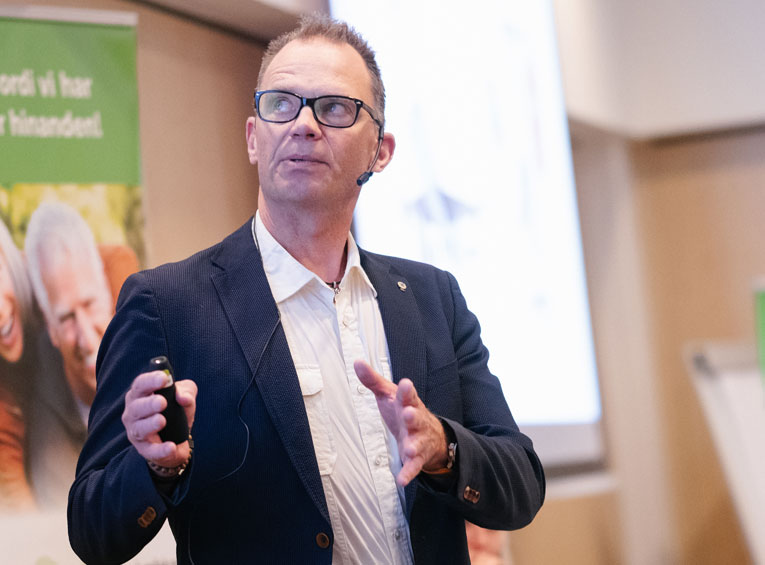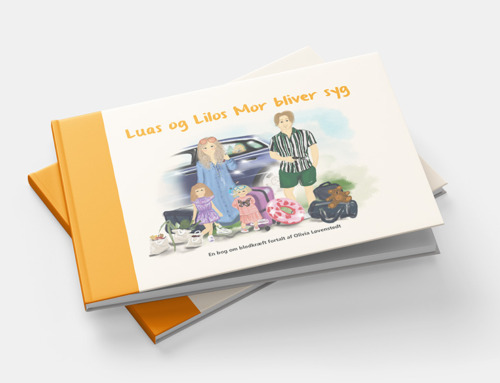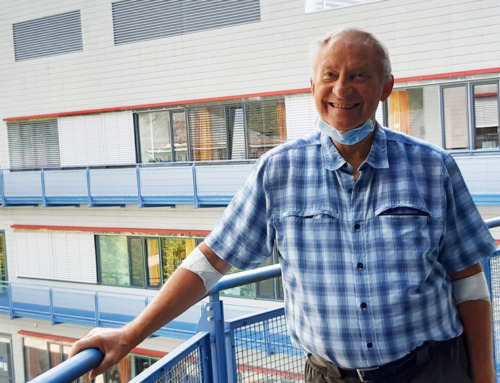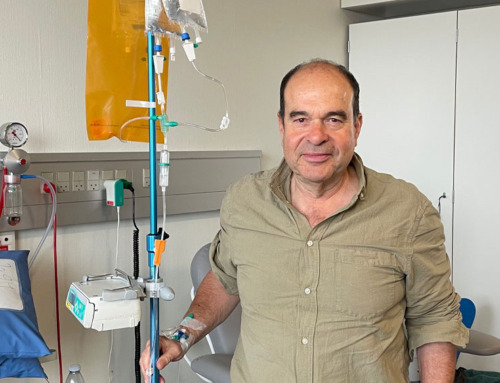Artiklen er på engelsk – findes også på dansk under overskriften: Jan takkede ja til at være med i et klinisk studie
Before starting his treatment for CLL which was diagnosed well over five years prior, Jan Fredholm was offered the opportunity to join a scientific study testing a combination of novel and established drugs. The purpose was to investigate the effect of various treatments with and without chemotherapy. In this piece, Jan and his doctor, hematologist Christian Poulsen, give us insight in what it’s like to participate in a study testing new drugs.
When introducing new drugs, it is of course important to find out exactly how well they work and on whom, and possibly even if they are more effective in combination with other drugs. Therefore, patients are offered to participate in scientific clinical trials. And it makes good sense for all parties, as studies often can give a patient access to new, promising treatments, i.e. treatments that have not yet found place in the current treatment guidelines.
Typically, these trials include patients from multiple countries and are run by an international team of doctors. The hematologic diseases are relatively rare, and it is necessary to work across national borders to get enough patients involved to create solid evidence for how they work.
In 2018, 57 years old Jan Fredholm from Ringsted in Denmark was offered to take part in the GAIA (CLL13) trial*. At this time, Jan had known about his diagnosis for well over five years but had not yet been treated for it. Until then, he had been in what the doctors call “Wait and Watch” – a period during which you are under observation but will not receive treatment before the disease begins to advance.
How do you select patients for clinical studies?
Christian Poulsen: “The trials have been designed to involve patients we under normal circumstances would treat by the existing guidelines. And it is a prerequisite for us that the patients are quite ordinary in order to be able to use the results. When selecting the patients, they must all comply with the conditions described in the study design. That goes for age, health in general and other things.”
And how do you choose what trials your hospital wants to participate in?
Christian Poulsen: “This process can be challenging. We must be able to distinguish between the commercial interests and the medical, professional interest. For us, it is crucial that we can say that this is beneficial to the patients – that they can expect to benefit from it. Our focus is on the medical interests and therefore we prefer trials initiated by doctors e.g. from a German or a Nordic group. But we also work with the pharmaceutical industry, and mostly they are responsive to how we think a study should be designed.”
How did you, Jan, get into the CLL13 study?
Jan Fredholm: “I did not know what it was all about from the start. But I had decided to join in if it could benefit others. But I spent a lot of energy trying to understand the conditions and what it was all about. I did not see it as risky and I could always return to the standard treatment if needed and I felt no pressure from the doctors. That was important to me. It was also crucial to me that none of the four “arms” in the study were placebo. I knew I would receive active treatment, but not exactly which one.”
Did you have any reservations?
Jan Fredholm: “As mentioned, I had thoroughly studied what it was all about and also read about rather serious side effects. I had lots of questions for Christian mainly because I travel a lot with my job. There were many practical things that went into my considerations. I mainly talked to the project nurse, but Christian was good at calling me and answering my question.”
How do you follow the patients during the trial?
Christian Poulsen: “It is described in detail how often we must see the patients and how they should be examined. But we do not deviate from our usual standard, no matter how it is described in the protocol (the trial). These studies are international, and the clinical practice differs from country to country, but we strictly follow our own standards. In general, you get a closer contact with the doctor if you take part in a clinical trial than if you do not. This is important to the patients.”
“As a professional, you must always be aware that trying out something new involves a risk and therefore we keep a close eye on the patients. There can always be something unexpected and critical when you are sick but if something happens during a trial, it can become unbearable. We do not allow that.”
How did you experience the contact with your doctor?
Jan Fredholm: “Being part of a clinical trial, it is a clear advantage that you have a close dialogue with the doctor. I have been grateful for that. Especially because my treatment course has fluctuated a lot. I have been both up and down in doses, and in connection with that, it has been nice with the close interaction.
How did you involve your relatives?
Jan Fredholm: “My wife and I and read the protocol thoroughly together. It was important that she also knew what to expect and that it could go both up and down because it was a trial.”
How do you prepare the patients as a doctor?
Christian Poulsen: First of all, I spend a lot of extra time. It is important that the patient feels safe and therefore we review every detail in the process and how it will affect the patient.
What are your reasons to participating in a clinical trial like this?
Jan Fredholm: “First of all, I assume that the new medicine is better than the old. The prospect that we can eventually stop using chemotherapy is a great motivator and I like the idea of being part of that. But I do not feel that there is a risk. The medicine we receive is approved and has been I used before in other treatment regimes. We tested medicine in four different combinations, and I was in the group that did not get chemotherapy. It turned out that I was sicker than I thought myself. That became clear as I got better surprisingly fast. But I had many thoughts (and worries) along the way and ups and downs because the dose of the treatment had to be adjusted.”
How do you see the result as a doctor?
Christian Poulsen: “We are pleasantly surprised. It looks good. Along the way, we have had a few patients receiving chemotherapy that had to be stopped due to side effects. Having said that, the new treatments also have side effects that we must relate to. Trees do not grow into the sky.
* The GAIA (CLL13) trial is a so-called randomized, four-arm, first-line study of physically strong patients with no del17p or TP53 mutation. The study is designed to test whether different combinations of new advanced treatments in chemo-free combinations are better than the standard treatments currently used in chemotherapy. The program is run by The German CLL Study Group (GCLLSG) in collaboration with The Nordic CLL Study Group, HOVON, SAKK, Cancer Trials Ireland and The Israeli CLL Study Group.
Dictionary:
Protocol: A carefully defined plan for a clinical trial. The protocol describes the purpose of the trial, how it should be carried out, who can participate and indicate a timetable. A protocol is always approved by the health authorities.
Randomized: A randomized clinical trial is a study of the efficacy of a treatment where patients are randomly distributed to either receive an experimental treatment or a control treatment.
Placebo: Placebo is a treatment, such as saline injections and calcium tablets, without treatment effect.
Wait and Watch: Is a term for the period from which a patient is diagnosed with CLL to he/she is being treated. Throughout the period, the patient regularly goes to checkups with the doctor. This period may last many years.






